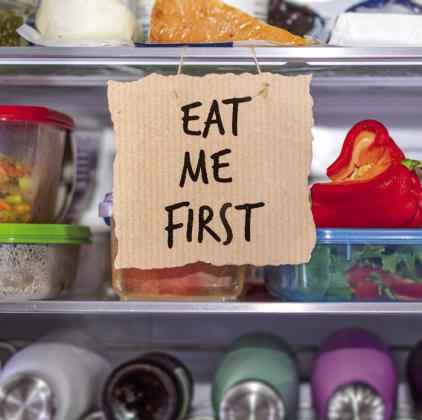WASTING FOOD WASTES MONEY— and has a big impact on the environment.
Think about it, every bit of food you throw away wastes all the resources used to grow/produce the food item, package it, and transport it, not to mention the money you spent to buy it.
Just how wasteful have we become? On average, Americans throw away a pound of food per person per day. That’s a tremendous amount of food waste that, with a little more planning and organization on our part, could be avoided or at least significantly reduced.
There are numerous potential benefits to reducing food waste, including saving money, increasing the amount of food available for people who do not always have enough to eat, conserving natural resources and energy, decreasing environmental damage, and even striking a blow against climate change.
Nobody intends to waste food, and there are many reasons we do it. Sometimes we buy more food than we need, prepare too much for a meal, fail to reuse leftovers, have an unexpected change in our schedule or plans, or simply forget about perishable foods tucked away in the back of the fridge.
The good news is, if we strive to be more mindful and creative when it comes to buying and using food, we can slash our food waste significantly. Here’s how:
Shop smart
We tend to end up with a lot more food than we need when we head to the grocery store without prior planning. To sidestep this pitfall, plan out all your meals for the week and stick to your plan. To avoid impulse buying, take a list with you and buy only the listed items.
Practice culinary creativity Find creative ways to reuse leftovers and perishable items. For example, you could repurpose bruised fruit into a cobbler, or salvage wilted lettuce by cooking it with a little bacon and vinegar. Throw veggie scraps into a freezer bag to make vegetable stock. If you get carried away and make too much of something, you can always share it with a neighbor or coworker.
Get organized
A lot of foods end up going to waste because we forget we even have them. Doing a frequent food inventory will help prevent this unnecessary loss. It’s also a good idea to arrange items in the pantry, refrigerator, and freezer so you can read the labels. Simply put, a well-organized kitchen equals less food waste!
Store it right
Cold foods need to be kept cold, so keep a thermometer in your refrigerator to ensure it’s maintained at a safe temperature. Rember, bacteria grow best in the “danger zone” between 40 degrees and 140 degrees Fahrenheit. To help preserve your fresh foods longer, take advantage of the “vegetable drawer,” which should be more humid, and the “fruit drawer,” which should be lower in humidity. If you don’t think you will use meat or bread before it goes bad, you can always freeze these items.
Know what those date stamps mean
Date stamps have little to do with food safety. They are provided by the manufacturer as a suggestion of when the product is at its peak quality for consumption. “Sell By,” Use By,” and Freeze By” dates are not safety or expiration dates. Milk that has been handled properly during shipping should last past the date on the carton. However, milk that has been left on the back dock on a warm day or too long in your car may not last as long. Your nose will let you know.
If you let your pocketbook do the talking, it’ll tell you that the average American spends nearly $3,000 per year on unused groceries. If added back to your household budget, that money could certainly be put to better use.
In addition to financial considerations, remember that producing food involves agricultural land, water, and energy. Food production also requires the use of fertilizers and pesticides, which can pollute lakes and streams with excess nitrogen and other nutrients. We know this all too well living by Lake Erie with its algae blooms.
As consumers, we need to recognize and monitor our food waste on a daily basis. You can be part of the solution if you’re willing to change some of your food purchasing, storage, and preparation habits.
✲


